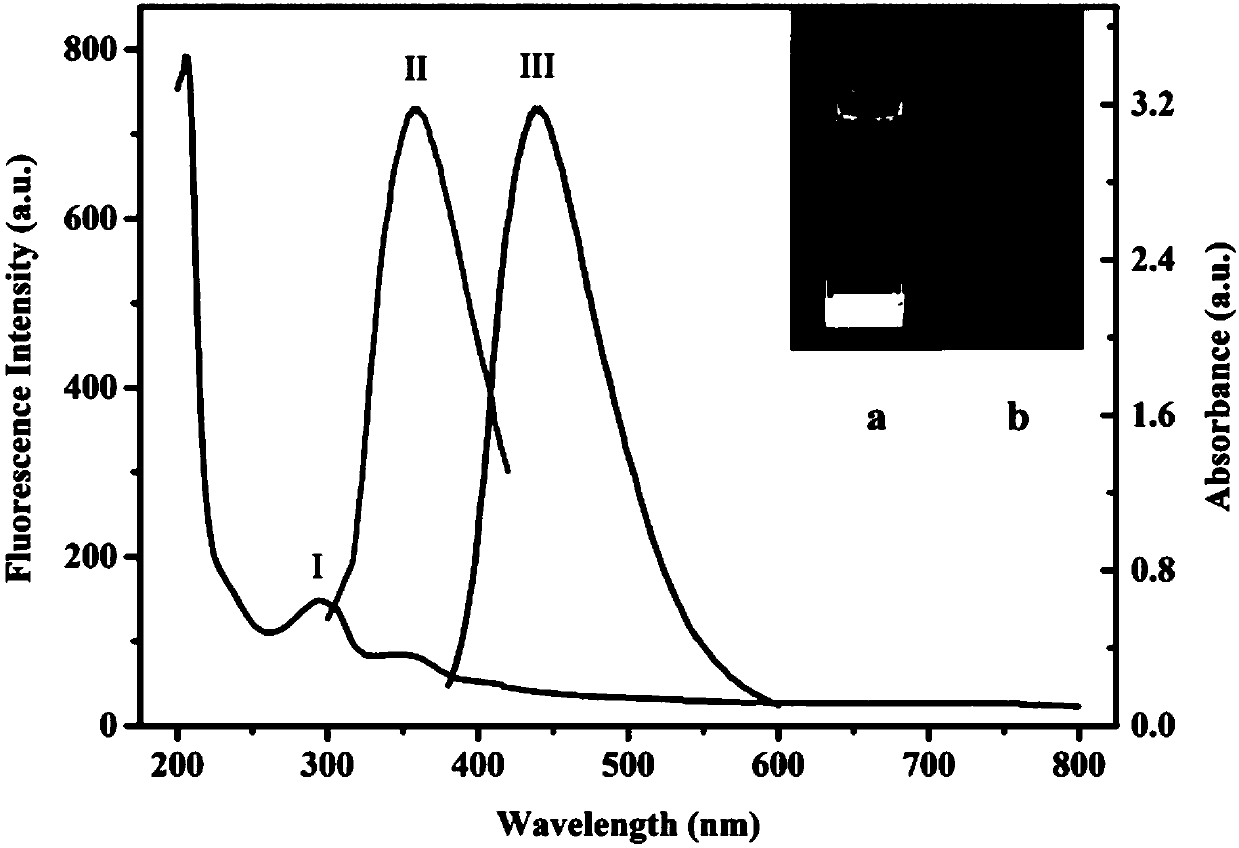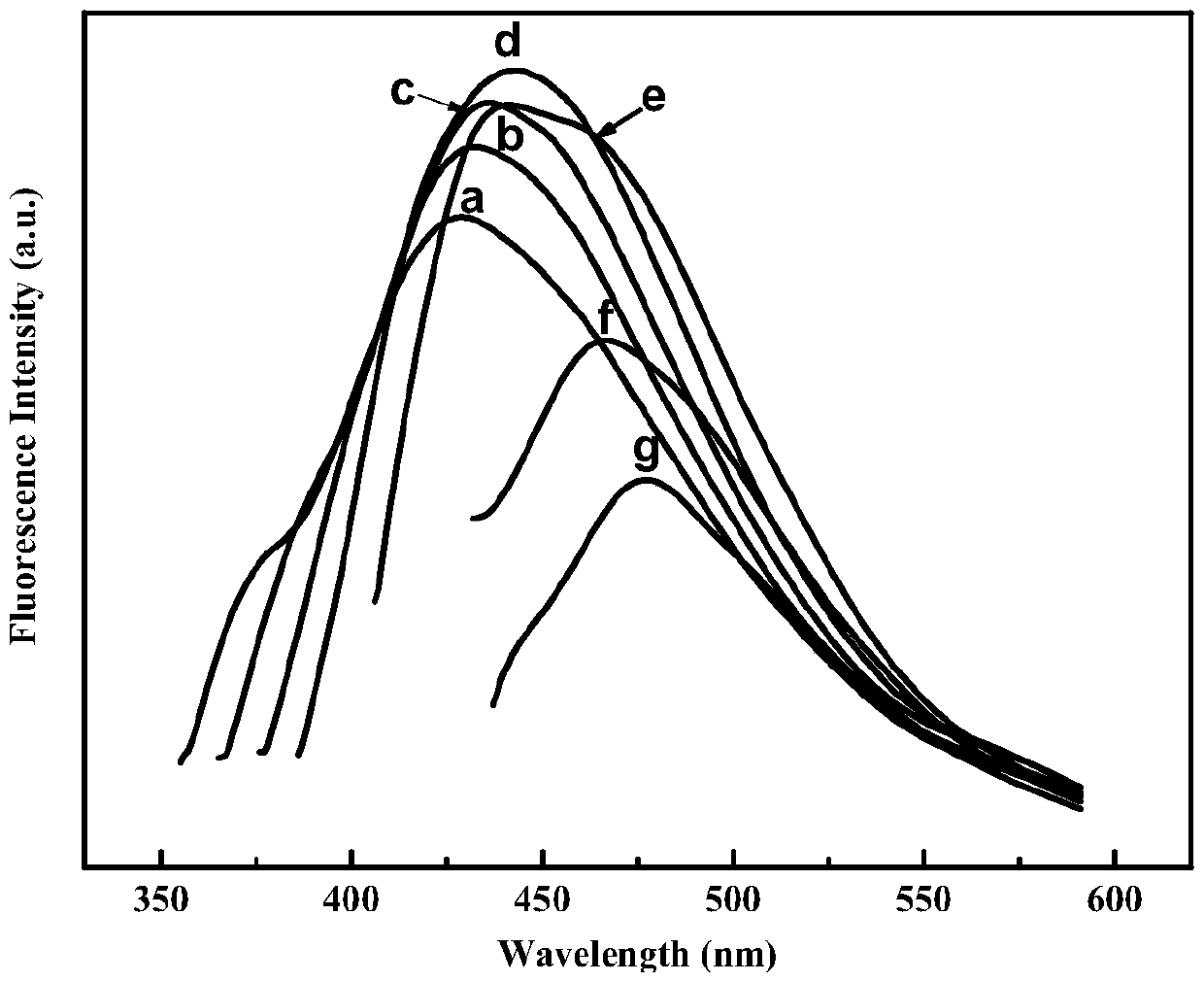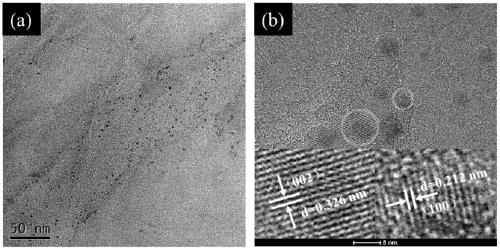Carbon nanodots with optical excitation active oxygen generating performance and preparation method thereof
A technology of carbon nanodots and active oxygen, which is applied in nanocarbon, nanotechnology, nanotechnology, etc., can solve the problems of complex preparation methods and high costs, and achieve good solubility
- Summary
- Abstract
- Description
- Claims
- Application Information
AI Technical Summary
Problems solved by technology
Method used
Image
Examples
Embodiment 1
[0017] Preparation of carbon nanodots
[0018] Weigh 5 mg of dopamine solid and dissolve it in 5 mL of distilled water, add 5 mL of 3-aminopropyltriethoxysilane, 40 mL of distilled water and 5 mL of ammonia water (concentration 14.8 mol / L) to the solution in sequence, and place the above solution in a 100 mL round bottom In the flask, mix evenly, put in a strip-shaped magnetic stirrer, place the round-bottomed flask in a heating-type magnetic stirring water bath, and react in the dark at 60°C for 16 hours; The yellow liquid passes through a 0.22 µm microporous membrane, and the filtrate is dialyzed with a dialysis bag with a molecular weight cut-off of 500-1000 for 24 hours at room temperature and protected from light, and the ultrapure water dialysate is changed every 8 hours. After concentrating by rotary evaporation, freeze-dry for 24 hours to obtain powdery carbon nanodots.
[0019] The above powdered carbon nano-dots were prepared into a 0.05mg / mL solution with distilled...
Embodiment 2
[0023] Figure 5 A, b, and c in the above show that the detected absorbance value at 655 nm of the carbon nanodot solution, TMB solution, and carbon nanodot / TMB mixed solution that has not been irradiated with a wavelength of 395 nm is basically zero, indicating that without care, the above The solution did not change color due to oxidation. Figure 5 The d and e in the figure show that after irradiating with a wavelength of 395 nm for 1 hour, the detected absorbance values of the carbon nanodot solution and TMB solution at 655 nm are basically the same as those of the non-irradiated group, indicating that the simple carbon nanodot solution and TMB solution after light irradiation No discoloration due to oxidation. but by Figure 5 In f, it can be seen that when the carbon nanodot solution-TMB mixed solution is irradiated with a 395 nm wavelength light source for a period of time, the color of the mixed solution changes significantly, from colorless to blue, and the absorp...
Embodiment 3
[0025] Directly scan the ESR spectrum of the carbon nanodot solution, Image 6 (a) shows g = 1.9879 for the carbon nanodot solution.
[0026] Use a capillary to take the mixed solution of carbon nanodot solution and TEMP, put it into the sample tube, and measure its ESR signal after irradiating with 365nm light for 10min. Image 6 (b) shows the ESR signal of the singlet oxygen-TEMP binding product TEMPO. The results show that the carbon nanodots can generate singlet oxygen after light irradiation.
[0027] Use a capillary to take the mixed solution of carbon nanodot solution and DMPO, put it into a sample tube, and measure its ESR signal after irradiating with 365nm light for 10min. Image 6 (c) in and Image 6(d) shows that the aqueous solution of carbon nanodots can detect the characteristic peak of the adduct DMPO-OH generated after the signal DMPO captures the hydroxyl radical after being illuminated (the quartet with an intensity ratio of 1:2:2:1 ), and the characteri...
PUM
 Login to View More
Login to View More Abstract
Description
Claims
Application Information
 Login to View More
Login to View More - R&D
- Intellectual Property
- Life Sciences
- Materials
- Tech Scout
- Unparalleled Data Quality
- Higher Quality Content
- 60% Fewer Hallucinations
Browse by: Latest US Patents, China's latest patents, Technical Efficacy Thesaurus, Application Domain, Technology Topic, Popular Technical Reports.
© 2025 PatSnap. All rights reserved.Legal|Privacy policy|Modern Slavery Act Transparency Statement|Sitemap|About US| Contact US: help@patsnap.com



